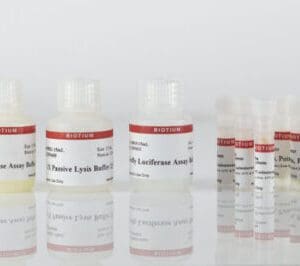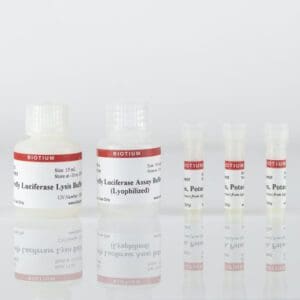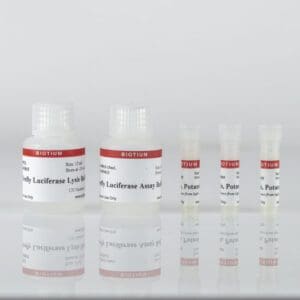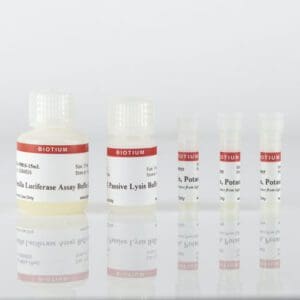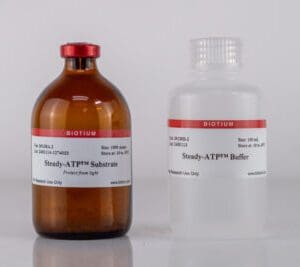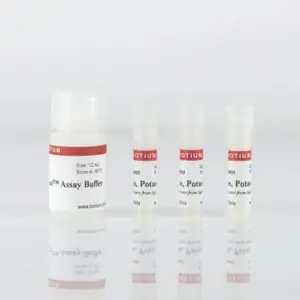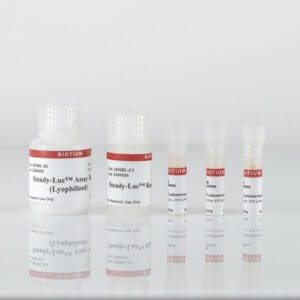
Firefly and Renilla luciferases are widely used as reporter genes for research and drug screening. Our luciferase kits offer excellent sensitivity at a fraction of the cost of other suppliers. Our lyophilized firefly assay kits can be shipped at room temperature to save you even more money. We also offer a wide selection of D-Luciferin and coelenterazine substrates available separately.
-
Firefly & Renilla Luciferase Single Tube Assay Kit
This kit is designed for sequential measurement of Firefly and Renilla luciferase activities in transfected cell reporter assays.
Log in for pricing -
Firefly Luciferase Assay Kit (Lyophilized)
Highly sensitive & linear flash-type luminescence assay for measuring firefly luciferase in transfected cell reporter assays.
Log in for pricing -
Firefly Luciferase Assay Kit 2.0
Highly sensitive & linear flash-type luminescence assay for measuring firefly luciferase in transfected cell reporter assays.
Log in for pricing -
Renilla Luciferase Assay Kit 2.0
Highly sensitive & linear flash-type luminescence assay for measuring Renilla luciferase activity in transfected cell reporter gene assays.
Log in for pricing -
Steady-ATP™ HTS Viability Assay Kit
A luciferase-based ATP cell viability assay offering high sensitivity, wide dynamic range, and long-lasting signal for high-throughput luminescence detection in microplates.
Log in for pricing -
Steady-Luc™ Firefly HTS Assay Kit
A homogeneous firefly luciferase reporter gene assay kit with a luminescence half-life of about 3 hours, allowing batch processing in microplates.
Log in for pricing -
Steady-Luc™ Firefly HTS Assay Kit (Lyophilized)
A homogeneous firefly luciferase reporter gene assay kit with a luminescence half-life of about 3 hours, allowing batch processing in microplates. The assay buffer is provided in lyophilized format for convenient room temperature shipping and -20°C storage.
Log in for pricing

